Have you hopped into your friend’s car for supper in the middle of the night, only to find out that your friend doesn’t have a destination in mind?
Did you feel lost or adventurous?
If you are a spontaneous person, you’ll love it. But what if you were about to fall asleep when your friend showed up and dragged you out of your house?
Trading is a long journey. It’s akin to running a marathon where slow and steady wins the race as opposed to being fast and reckless.

With a sound trading strategy in place, you won’t go broke taking profits along the way. Taking profits will help you accumulate wealth and cover the losses that come your way inevitably.
Are you ready to discover the 3 simple ways to take profit?
#1 Support And Resistance
Support and resistance is one of the core beliefs in technical analysis. You can think of support as a spring mattress. When you drop something on a mattress, it is likely to bounce.
Likewise, a support area is a price area which prices are likely to to bounce upwards.
Here’s a visual example.
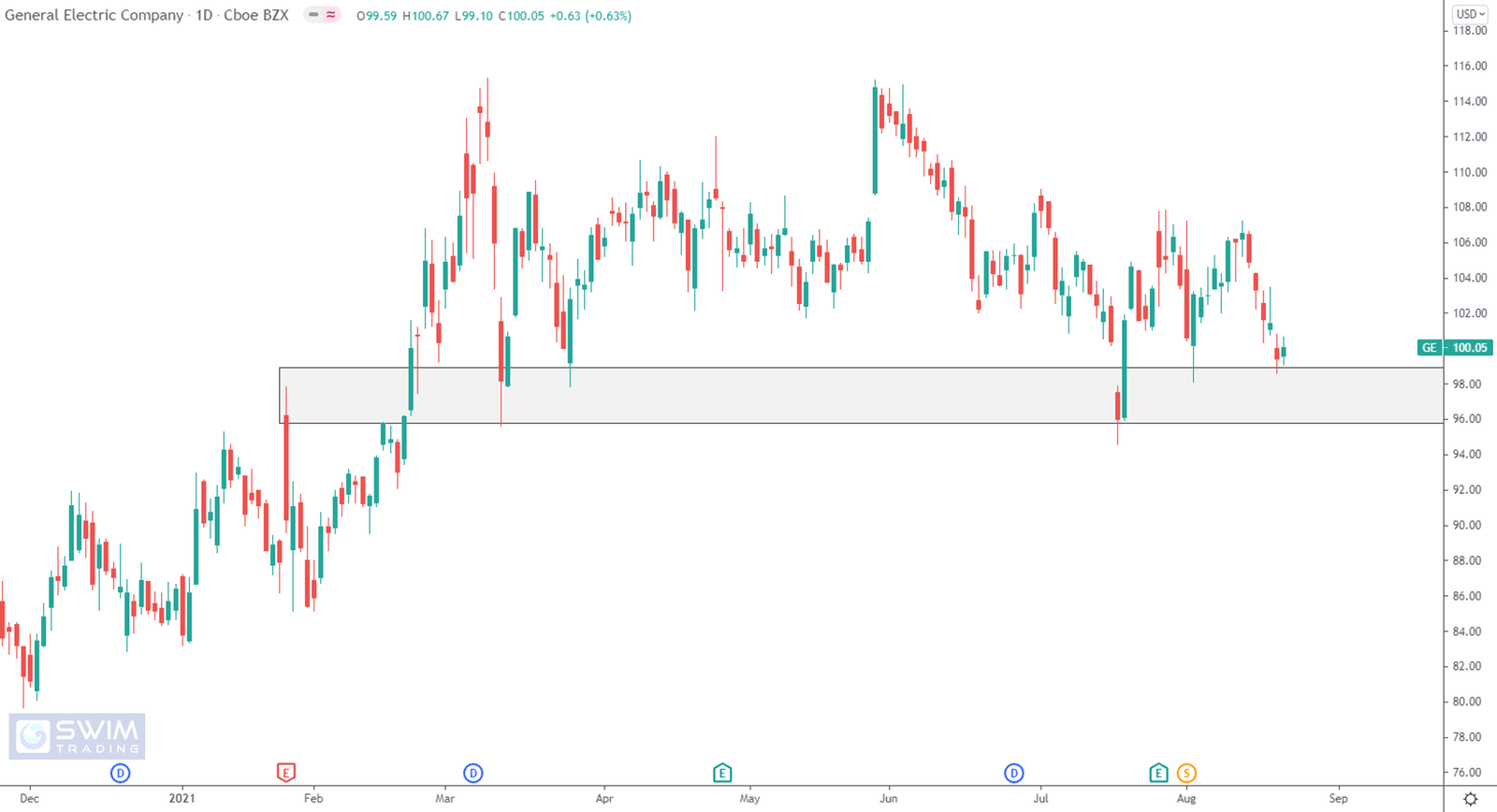 Can you tell that there’s a strong support zone between $96 and $99? It’s shown by the gray box.
Can you tell that there’s a strong support zone between $96 and $99? It’s shown by the gray box.
When the price of General Electric (GE) falls to $96, it is likely to bounce up.
It’s important to understand this so that you can understand the concept of resistance at 1st glance.

Resistance works similarly to support.
A resistance area is known to be an area where prices are unable to break new highs (in a bull market) or form new lows (in a bear market).
A resistance area is like a wall which is holding strong, preventing anyone from crossing it.
Here’s how it looks like on the chart of GE.
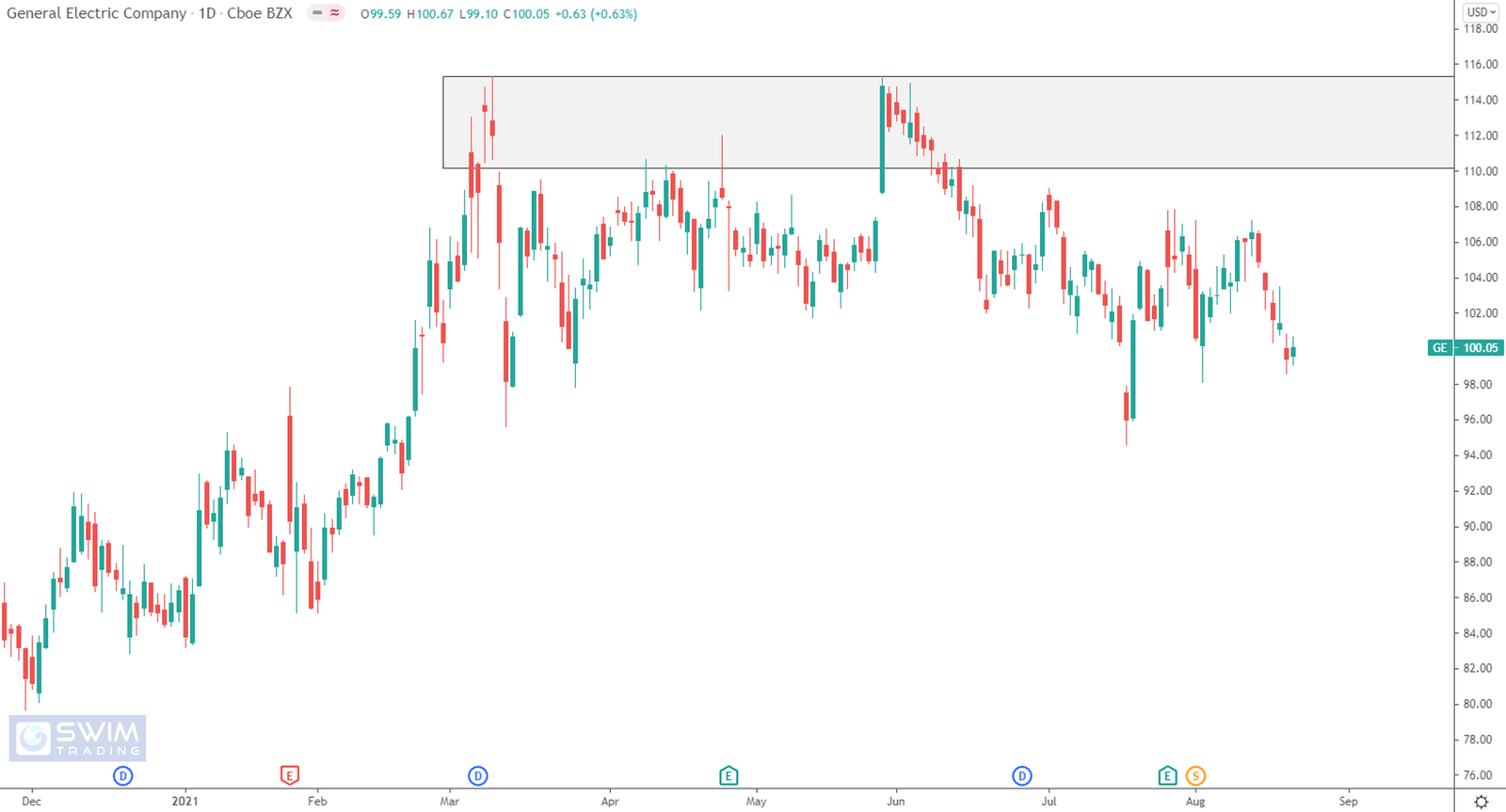
You can tell that there’s a strong resistance zone between $110 and $115.50.
What happened when prices reached that area?
Now, let’s place both support and resistance to the chart of GE. What can we see?
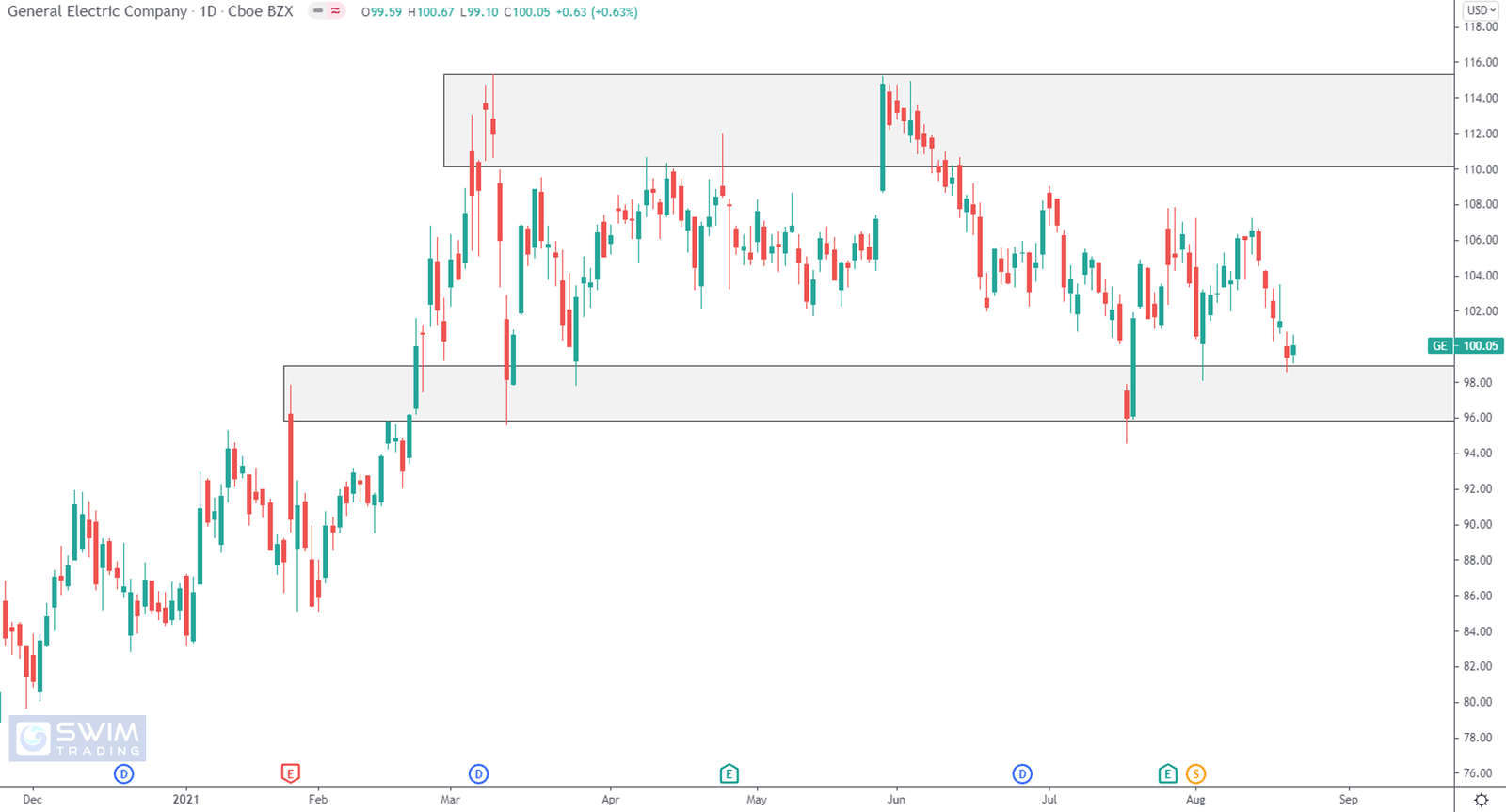
With support and resistance zones plotted, you can tell that the prices of GE is moving sideways, and has been so since March 2021.
How can you make use of support and resistance to trade? How is support and resistance helpful for profit taking?
In a range bound market such as GE, you can buy at the support level (between $96 and $99) and set your profit target at the resistance zone (between $$110 and $115.50).
You can also short-sell when prices of GE is at its resistance zone (between $$110 and $115.50), setting your profit target in its support zone (between $96 and $99).
Tip: Remember to set a stop loss to protect your trading capital.
#2 Time-based Exit
Suppose you study the prices of GE and discovered that prices tend to rise in the month of February. Therefore, you would like to buy and sell GE within February. This is known as a time-based exit.
Let’s see how it works!
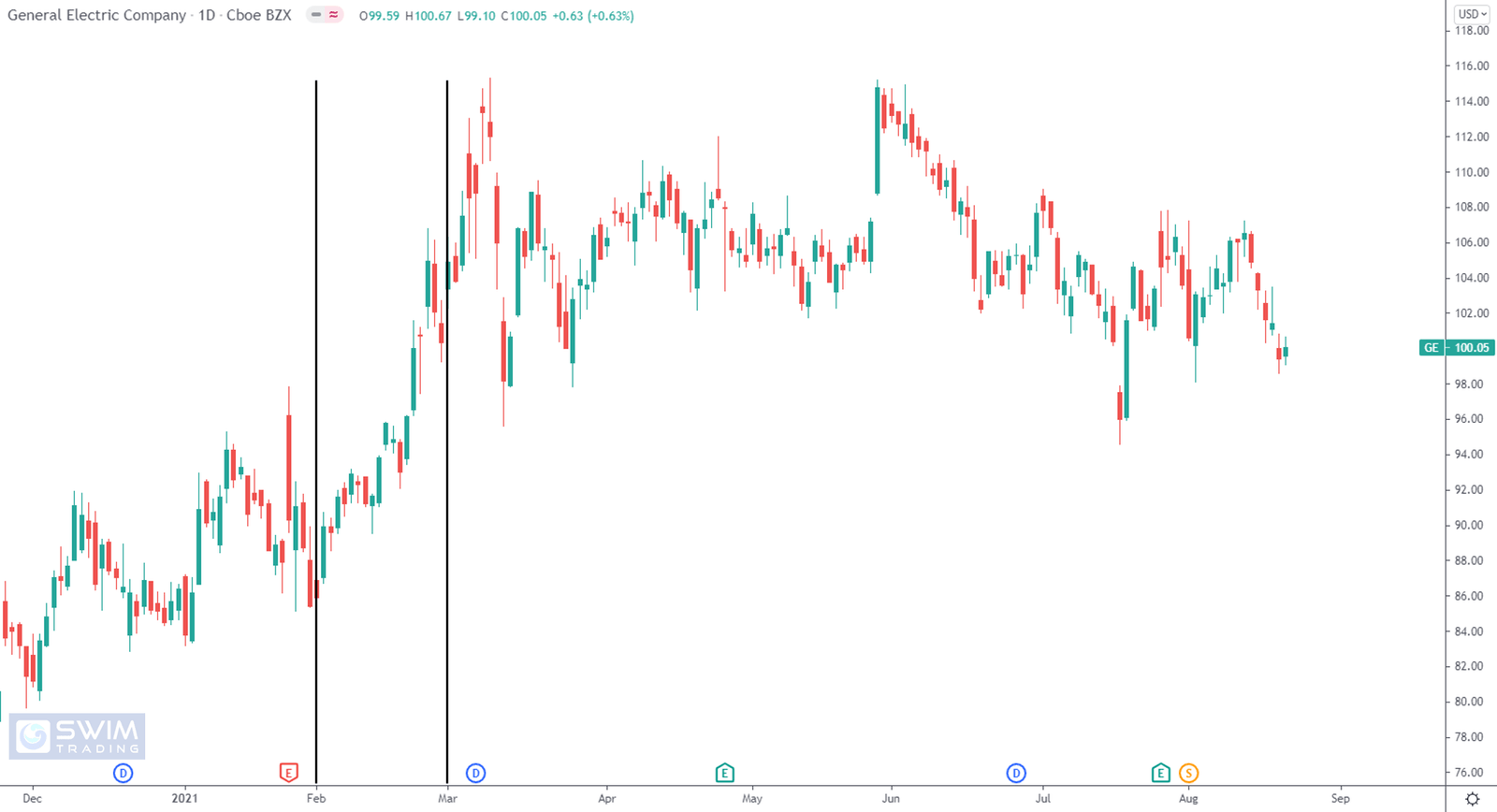
The month of February has been marked out with 2 black lines.
You can choose to buy GE on the 1st trading day in February and sell it on the last trading day of February. In this instance, you’d make a tidy profit of 16%! Not bad, I must say!
#3 Moving Average Exit
The moving average is a powerful and visual indicator.
With the moving average indicator, you can tell the direction and speed of price movement. The moving average lines also act as a dynamic support and resistance.
You can find out more about the Math and idea behind the moving average indicator here.
You can learn how to use the moving average indicator for trading here.
I prefer using the exponential moving average (EMA) as it’s more dynamic than the simple moving average (SMA).
Let’s put on the 22 period EMA.
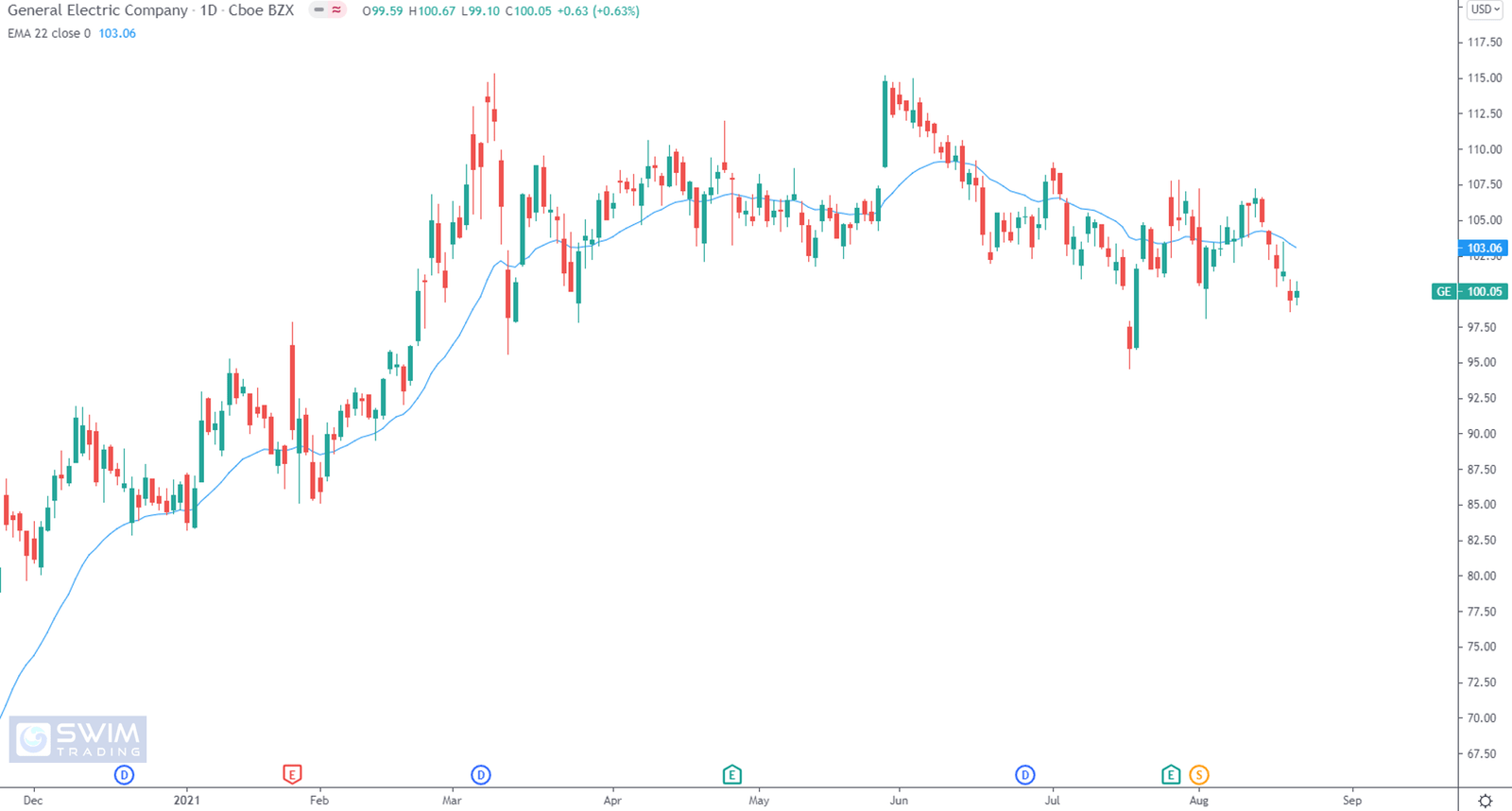
Putting on the EMA, you can easily tell that GE was in an uptrend till March 2020. The gradient of the EMA started to be almost horizontal thereafter, signaling that prices are going sideways.
How can you use the EMA to help you determine your profit taking price level?
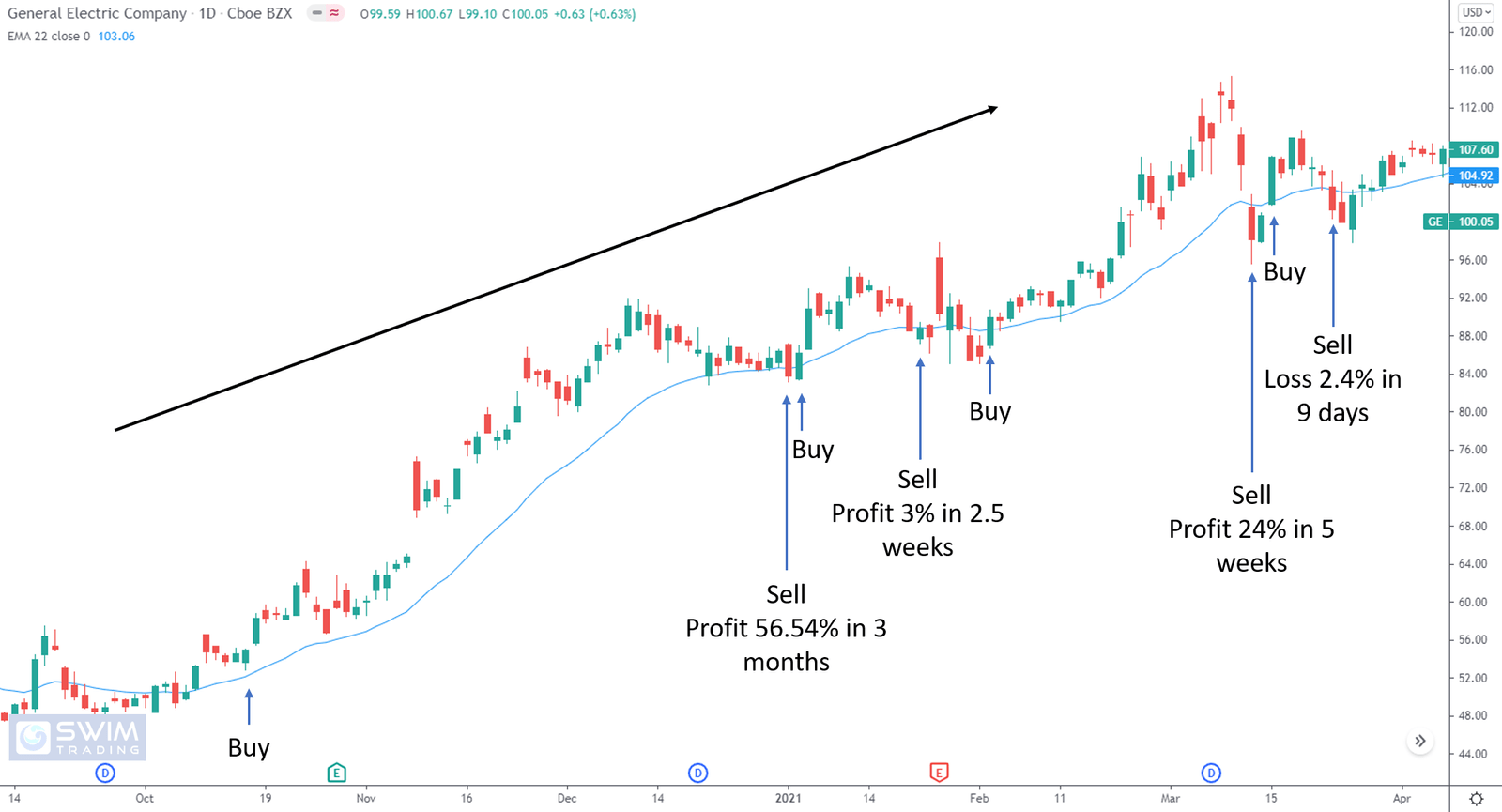
Let’s go back to October 2020 when the uptrend started.
A good time to buy shares of GE is when prices are above and near its EMA (as annotated on the chart above).
A good time take profit by selling your holdings of GE when its price 1st close below its EMA (as annotated on the chart above).
As you can see, this strategy works well in a strong up and down trend. When prices are moving sideways, this strategy will cause you to buy and sell in a short period of time. You’d be lucky to make money using this strategy in a sideways market! This is also known as being whipsawed.
Which profit taking strategy do you like? Which suits you best?
3 Things You Must Remember

#1 Support and resistance can be used when prices are ranging
#2 Time-based exits are useful after sufficient research
#3 Moving averages are helpful when the stock is trending
Here’s What You Can Do To Improve Your Trading Right Now:
#1 Register for our market outlook webinars by clicking here
#2 Join us in our Facebook Group as we can discuss the various ways of applying this by clicking here
#3 Never miss another market update; get it delivered to you via Telegram by clicking here
#4 Grab a front row seat and discover how you can expand your trading arsenal in our FREE courses (for a limited time only) by clicking here
Trade safe!

